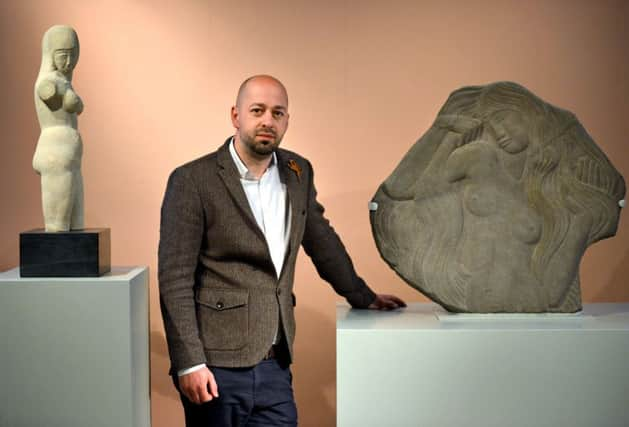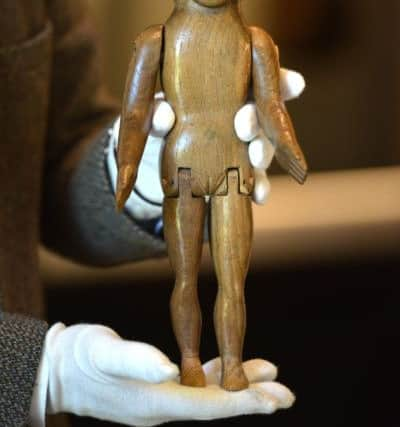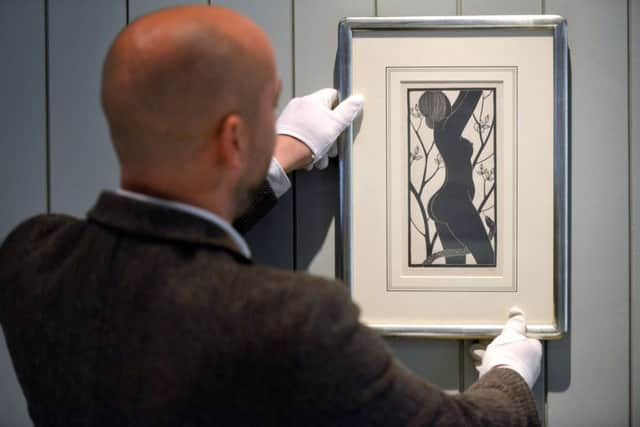Ditchling Museum promises '˜honest and open' exhibition on artist and abuser Eric Gill


The village’s success as a vibrant artistic community can trace its roots to Eric Gill, a man who is simultaneously one of the most celebrated and talented artists of the 20th century and a paedophile who subjected his own daughters to years of harrowing abuse.
While it is clearly an uncomfortable subject for many, a new exhibition set to open at Ditchling Museum of Art + Craft next week aims to look at how the knowledge of Gill’s crimes affects the art.
Advertisement
Hide AdAdvertisement
Hide Ad“Anyone who has Googled Gill will know that’s the biography,” said the museum’s director Nathaniel Hepburn.


“We’re not being disingenuous in how we show the work. We are just being honest and open to our audience, to say: ‘You know that. You’re looking at the work. How does that affect you?’ We know that within our audiences everyone is going to respond differently.
“We spoke to Brighton Survivors Network, the National Association for People Abused as Children and Stop It Now, who are all really supportive of the museum essentially because we are no longer brushing it under the carpet.”
More than 80 works will be on display at the exhibition, including several major works which have never been in a public viewing before.
Advertisement
Hide AdAdvertisement
Hide AdPerhaps controversially, the collection includes nudes of Gill’s daughters, acting as a stark reminder of the abuser behind the artworks.


For Mr Hepburn the exhibition’s theme is key to the questions the exhibition seeks to address. He said: “I think for many people it is a lot easier to separate the biography from the artwork when it is lettering or religious imagery. So this exhibition is exclusively focusing on the body, because it’s a huge part of Gill’s work, a huge part of Gill’s artistic output is his interest in the body.
“He is not unusual in that respect, many great artists find depicting the body to be a fascinating area of work. So this exhibition focuses on that area and allows us to ask that question at different points and in different ways.The question that’s asked throughout the exhibition is; ‘Is the biography relevant at this point?’
“Obviously when the daughters are the subjects of the work, then it becomes much harder to separate the biography from the art.
Advertisement
Hide AdAdvertisement
Hide Ad“There’s one object within the museum’s collection, which really brings this question to the fore. An artistic object and how that object might be changed once we know about the biography. We have a doll that Eric Gill carved for his daughter Petra in 1910 – a decade before he abused her. However when you know about the abuse, it may change how you look at this child’s toy.”


The doll itself serves as inspiration for another part of the exhibition. An installation by Royal Academian sculptor Cathie Pilkington.
Co-commissioned by Ditchling Museum and the Brighton Festival, Pilkington’s installation, titled ‘A Doll For Petra’, features painted sculptural busts, modelled on the head of Gill’s doll.
Mr Hepburn said: “It is the stating point in the exhibition, for us saying ‘we are showing the work but everybody’s response to that work is something we’re really interested in.’”
Advertisement
Hide AdAdvertisement
Hide AdThroughout the exhibition, the museum will be inviting visitors – and village residents – to share their views and reactions to the work.


Mr Hepburn said: “The village like any other group of people, like the people who work here and all of our visitors, will fall within a spectrum. From those who want all of his work thrown in the duck pond and really don’t want to consider an artist who has done that to their children – I don’t agree with that point but I understand it – through to those people who say ‘why are you talking about the biography that just spoils the work we really want to enjoy?’
“I don’t take that position either I think the biography is integral to our understanding of the work, but I think many people in the village will fall within that spectrum,
“Many people in the village were here 30 years ago when the biography came out, and have talked about it in the pubs for a long time. It’s a part of the village’s history, which is why we think it’s important to talk about.”